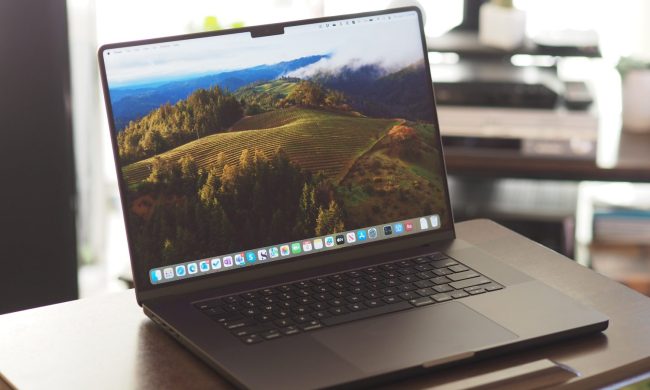Apple’s first wave of MacBook Pro updates for 2020 have finally launched, with an update to the 13-inch MacBook Pro. But there’s more in the works — Apple says its first Apple Silicon-powered Mac will launch by the end of the year, and we could also see a refreshed MacBook Pro 16-inch, a redesigned iMac, and even a dual-screen MacBook. These are exciting times for fans of Apple’s laptops.
Here’s what 2020 has brought to the MacBook Pro so far, and what we anticipate in the future.
Apple Silicon Mac: Price, specs, and release date
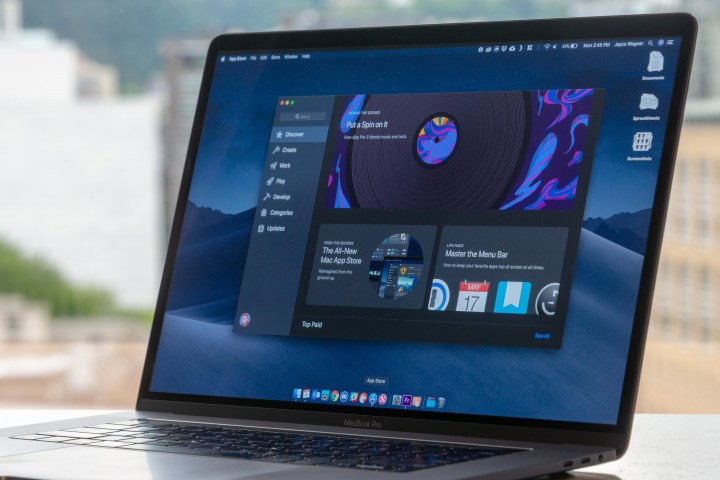
On May 4, Apple gave the 13-inch MacBook Pro an update, following a similar refresh to the MacBook Air in April. However, a more substantial update is also in the works, with a 14-inch laptop set to replace the 13-inch altogether later this fall alongside a refreshed 16-inch MacBook Pro.
Given that CEO Tim Cook has said the first Macs with Apple Silicon processors will launch at the end of 2020, we think this would be the perfect time for the 14-inch redesign, allowing Apple to launch a radically new Mac with all-new parts inside and out. This launch timing has the blessing of noted Apple analyst Ming-Chi Kuo, which is often a sign that a rumor is spot on.
What should we expect from an Apple Silicon Mac? If we take Apple’s word for it, the new processors will offer more performance than their Intel predecessors while maintaining low power consumption levels. That looks to be backed up by leaked benchmarks, which show Apple Silicon chips running in an emulated environment outperforming Microsoft’s ARM processors when they were running natively. Apple Silicon chips running in a native MacOS environment should perform even better. Added to that is a report from Bloomberg that claimed Apple is actively working on an ARM MacBook with a 12-core processor inside, and that the company is looking beyond 12 cores for future models. If such a processor were to make it to the MacBook Pro, things could get very interesting.
Going back to that emulated environment, it is a piece of software called Rosetta 2 that translates apps built for Intel processors so that they run on Apple Silicon. This means your apps should still run on an Apple Silicon Mac, even if the developers have not built versions for the new platform. Apple says vendors like Adobe and Microsoft have already built native apps for Apple Silicon, which is an encouraging sign for the upcoming MacBooks.
And what about the price? Well, the newly updated MacBook Pro still starts at $1,299, the same price as in previous years. If Apple moves to a 14-inch MacBook Pro, we’d expect prices to stay similar.
The 13-inch MacBook Pro gets a revamp
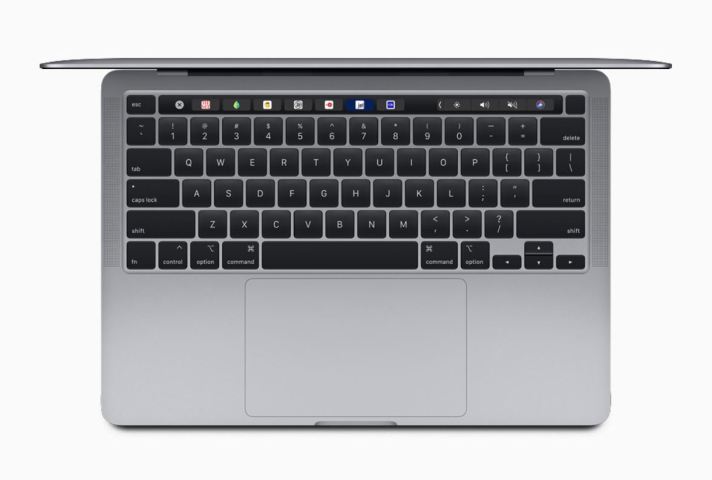
We have expected a small bump to the MacBook Pro 13 for a few months now. When the update came in early May 2020, however, it was actually a little more wide-ranging than expected.
We’ll start with the phrase that was on everyone’s lips: Magic Keyboard. Ever since the MacBook Pro 16 debuted with the revamped scissor-switch-enabled Magic Keyboard, the writing has been on the wall for the failure-prone butterfly keyboard. Now, Apple has brought it to the MacBook Pro 13, meaning every laptop in Apple’s range comes with a vastly improved set of keys. That alone would be reason to celebrate, but there’s more to dissect.
The second surefire bet was that Apple would improve the MacBook Pro 13’s processors, and it duly did, bringing 10th-generation Intel chips to the table. These come with improved Intel Iris Plus graphics, too. Not every model of the MacBook Pro 13 has received 10th-generation chips, though — the two entry-level models are still on Intel’s 8th-generation processors. If you want this performance boost, you should look at the two higher-end editions.
That’s not all that is reserved for the more expensive models. Firstly, the memory has been upped from 2,133MHz LPDDR3 RAM to 3,733MHz LPDDR4X memory (now up to 32GB in some models), but only in the two most expensive versions. You can now also get a 4TB SSD for the first time in a 13-inch MacBook Pro — but again, not in the two most affordable models.
There is one thing that has come to every model, however: Apple has doubled the storage across the board. We have long felt that 128GB was nowhere near enough storage for a modern laptop, and it seems Apple finally agrees, especially since the MacBook Air starts at 256GB of storage. The base MacBook Pro 13 now has 256GB of fast SSD storage, while the two midrange models come with 512GB. The high-end model is kitted out with a 1TB SSD.
Elsewhere, a lot remains the same. You still get the Touch Bar and Touch ID, you still get the same 2560 x 1600 Retina display, and you still get the same array of USB-C ports running at Thunderbolt 3 speeds (either two or four, depending on which model you opt for). The revamped MacBook Pro 13 is slightly heavier than its predecessor at 3.1 pounds versus 3.02 pounds, and is oh-so-slightly taller at 0.61 inches to 0.59 inches, but elsewhere the chassis remains almost identical. The pricing options haven’t changed either, starting at $1,299 and increasing to $1,999 for the top-end option (before you customize any components).
The MacBook Pro 14-inch
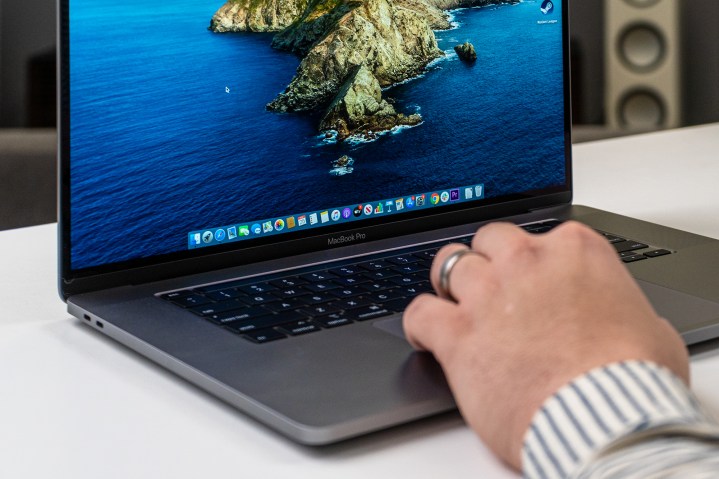
The May update to the 13-inch MacBook Pro might not be the last. If you believe the reports, a 14.1-inch MacBook Pro is also in the works.
The 16-inch MacBook Pro currently has exclusive features like the larger screen size and thinner bezels. This replaced the 15-inch MacBook Pro, and we expect the same thing to happen to its little sibling.
There are clues in recent EEC filings that indicate that the leaked device is part of the same family as the MacBook Pro, with the A2289 model number being prime among them. The MacBook Pro 16 has a model number of A2141, and is the first MacBook Pro to use a model number starting “A2” (previously, all recent MacBook Pros started “A1”). While various iPads also use model numbers starting A2, the emphasis on “portable computer brand” in the EEC filing implies this device is a relative of the MacBook Pro 16.
We think it’s highly unlikely this is a spec bump for the MacBook Pro 16, as it seems nonsensical to update that so soon after releasing it. The MacBook Pro 13-inch, however, still has those thick bezels, making it the much more likely subject of the EEC filing. That means we can expect the 14-inch MacBook Pro to have a similar spec sheet to the 16-incher: A Magic Keyboard with improved travel; slimline screen bezels; the Touch Bar with a physical Esc key and Touch ID button; and a new cooling system to extract more performance from the internal components.
There’s also a possibility that both the MacBook Pro 14 and the updated MacBook Pro 16 will get a small but welcome upgrade to their keyboards. AppleInsider reported that Apple’s MacBook keyboards could get backlighting powered by a form of True Tone. This would let the backlighting white balance to be dynamically adjusted based on the ambient light around you, helping make it a little more comfortable on your eyes in certain conditions.
An all-powerful, eye-burning Mini-LED display
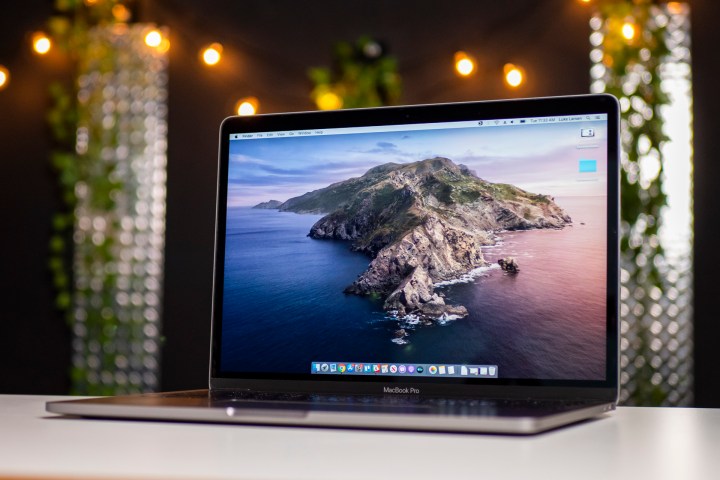
Over time, the MacBook Pro has built up a reputation for its stellar display, which boasts exceptional brightness, a wide color gamut, and low color error rates. Recent rumors suggest that those screens are set to get even better.
According to reputable analyst Ming-Chi Kuo, Apple is working on a Mini-LED display that will dramatically ramp up the quality, and we are already seeing this technology proliferate in high-end monitors launching in 2020. Apple’s Pro Display XDR — its highest-quality, most luxurious monitor so far — contains 576 LEDs; a Mini-LED MacBook Pro could boast up to 10,000 LEDs.
Kuo reckons this tech will launch in the 14.1-inch MacBook Pro and a refreshed MacBook Pro 16, as well as a 27-inch iMac Pro, a 12.9-inch iPad Pro, a 10.2-inch iPad, and a 7.9-inch iPad mini. This belief was recently backed up by a report from Taiwanese publication DigiTimes. Packing so many LEDs into a MacBook Pro display will result in exceptional HDR performance, wide color, and high contrast, while also avoiding the burn-in problems that OLED panels can experience. All in all, that should help take Apple’s MacBook Pro displays to another level entirely.
There are a few caveats. For one thing, Kuo understandably expects such advanced tech to cost an arm and a leg, so it won’t make it to every Apple device. Kuo also predicts a launch date of late 2020 to somewhere around the middle of 2021, meaning we may have to wait a little longer for this super display. Although Kuo doesn’t believe the Mini-LED MacBook Pro will be delayed by the coronavirus pandemic, a recent China Times report claimed the opposite, suggesting mass production of the panels won’t start until 2021. We will have to see who turns out to be correct.
MacBook Pro 2020: Our wishlist
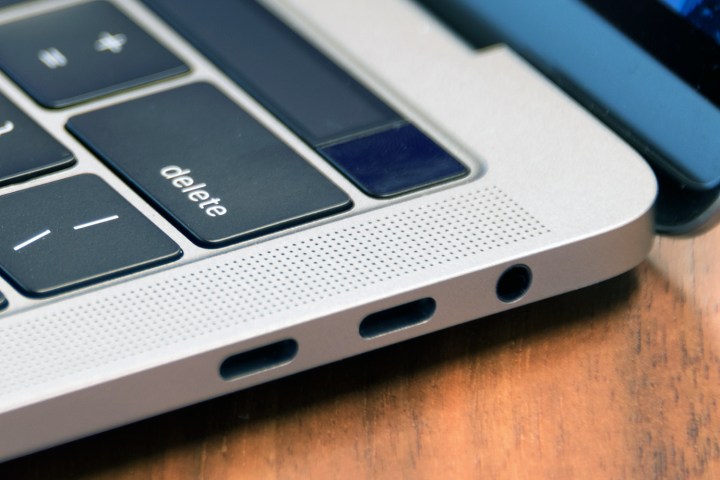
There are a few other things that we’d love to see on the 2020 MacBook Pro. While not all of these have been rumored, we wouldn’t be surprised to see any of them in the next iteration of the device.
The top of our list has to be Face ID. While the iPhone has had Face ID (and Windows has had Windows Hello) for a while now, Apple’s MacBooks have been bereft of this tech for far too long. Face ID on a MacBook would be more secure than Touch ID and even more convenient — all you’d have to do would be to sit down at your desk and look and your screen, then boom — you’re logged in. No reaching for a Touch ID button, just a seamless experience of the kind Apple is well known for. Interestingly, Apple seems to be at least considering bringing Face ID to Macs, according to a recently unearthed patent. Whether the company will actually implement it, however, is unknown.
We’d also be remiss if we didn’t talk about the ports. Apple thankfully seems to have left behind the days of the single USB-C port now that it’s killed the 12-inch MacBook, but it’s still possible to buy a brand-new MacBook Pro with just two USB-C ports. That’s appropriate for the MacBook Air, but for a device aimed at professional users with a plethora of accessories, monitors, and devices to connect up, that’s just not enough. We’re all for the super-speed benefits of Thunderbolt 3, but we need enough ports to be able to get our work done without drowning in dongles.
Finally, we’d love to see better battery life. We were disappointed with the MacBook Pro 13’s battery life, and even the MacBook Pro 16 didn’t give as much juice as we were hoping for, despite its enormous battery. Our prayers could be answered, though, as MacOS Catalina 10.15.5 contains a new Battery Health Management feature that actively measures your charging habits and your battery temperature to prolong its lifespan. We’re hopeful this means the MacBook Pro 2020 should last longer than its predecessor.

